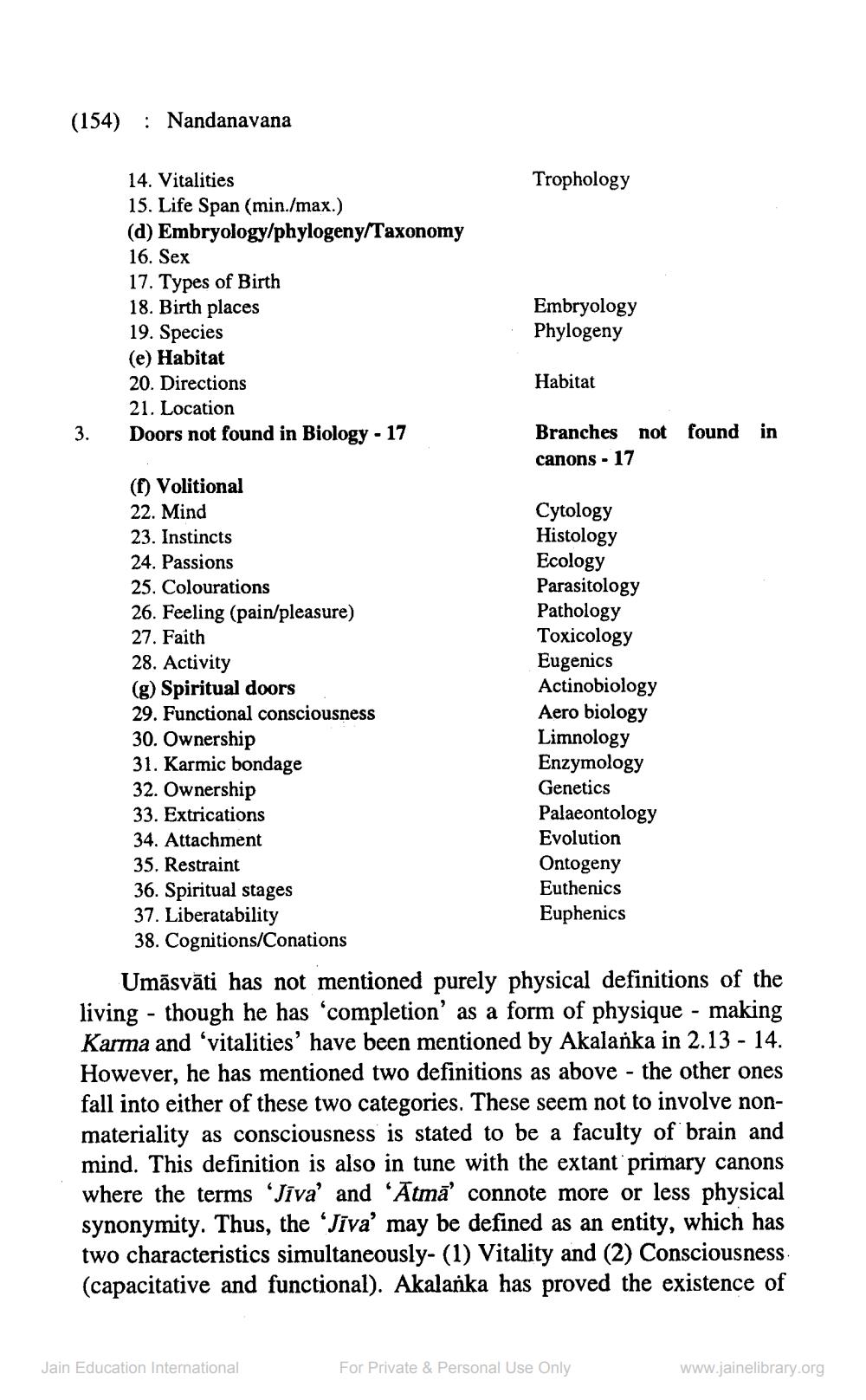________________
(154) : Nandanavana
14. Vitalities
Trophology 15. Life Span (min./max.) (d) Embryology/phylogeny/Taxonomy 16. Sex 17. Types of Birth 18. Birth places
Embryology 19. Species
Phylogeny (e) Habitat 20. Directions
Habitat 21. Location 3. Doors not found in Biology - 17
Branches not found in
canons - 17 (f) Volitional 22. Mind
Cytology 23. Instincts
Histology 24. Passions
Ecology 25. Colourations
Parasitology 26. Feeling (pain/pleasure)
Pathology 27. Faith
Toxicology 28. Activity
Eugenics (g) Spiritual doors
Actinobiology 29. Functional consciousness
Aero biology 30. Ownership
Limnology 31. Karmic bondage
Enzymology 32. Ownership
Genetics 33. Extrications
Palaeontology 34. Attachment
Evolution 35. Restraint
Ontogeny 36. Spiritual stages
Euthenics 37. Liberatability
Euphenics 38. Cognitions/Conations
Umāsvāti has not mentioned purely physical definitions of the living - though he has completion' as a form of physique - making Karma and 'vitalities' have been mentioned by Akalanka in 2.13 - 14. However, he has mentioned two definitions as above - the other ones fall into either of these two categories. These seem not to involve nonmateriality as consciousness is stated to be a faculty of brain and mind. This definition is also in tune with the extant primary canons where the terms 'Jīva' and 'Atmā' connote more or less physical synonymity. Thus, the 'Jiva' may be defined as an entity, which has two characteristics simultaneously- (1) Vitality and (2) Consciousness (capacitative and functional). Akalanka has proved the existence of
Jain Education International
For Private & Personal Use Only
www.jainelibrary.org




